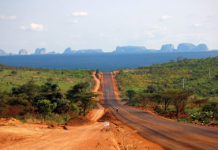In this article, I would like to share with you on a topic I have been involved with for more than half a year now and that is key when analyzing Development Cooperation projects. It is the official development assistance (ODA). This is a rather complex subject. This content is an overview providing a basic understanding of ODA.
ODA definition
ODA is defined by the OECD Development Assistance Committee (DAC) as government aid that promotes and specifically targets the economic development and welfare of developing countries. The DAC adopted ODA as the “gold standard” of foreign aid in 1969 and it remains the main source of financing for development aid.
ODA flows are defined as flows to countries and territories on the DAC List of ODA Recipients and to multilateral development institutions that are:
1.provided by official agencies, including state and local governments, or by their executive agencies and
2. each transaction which:
-
- a. is administered with the promotion of the economic development and welfare of developing countries as its main objective; and which
- b. is concessional in character (i.e. grants and soft loans). In DAC statistics, this implies a grant element of at least:
-
- 45% in the case of bilateral loans to the official sector of LDCs and other LICs (calculated at a rate of discount of 9%)
- 15% in the case of bilateral loans to the official sector of LMICs (calculated at a rate of discount of 7%)
- 10% in the case of bilateral loans to the official sector of UMICs (calculated at a rate of discount of 6%)
- 10% in the case of loans to multilateral institutions (calculated at a rate of discount of 5% for global institutions and multilateral development banks, and 6% for other organisations, including sub-regional organisations)
-
Loans whose terms are not consistent with the IMF Debt Limits Policy and/or the World Bank’s Non-Concessional Borrowing Policy are not reportable as ODA.
These calculations can only be performed using the OECD Grant element calculator at the following link http://www.oecd.org/development/financing-sustainable-development/development-finance-standards/
The DAC List of ODA Recipients shows all countries and territories eligible to receive ODA. These consist of all low and middle income countries based on gross national income (GNI) per capita as published by the World Bank, with the exception of G8 members, EU members, and countries with a firm date for entry into the EU. The list also includes all of the Least Developed Countries (LDCs) as defined by the United Nations (UN). The list is updated every three years: http://oe.cd/dac-list
- a. The Least Developed Countries (LDC);
- b. The Other Low Income Countries (OLIC) with per capita GNI <= $1 005 in 2016;
- c. The Lower Middle Income Countries and Territories (LMIC) with per capita GNI $1 006 – $3 95 in 2016;
- d. The Upper Middle Income Countries and Territories (UMIC) with per capita GNI $3 956 – $12 235 in 2016.
ODA data is collected, verified and made publicly available by the OECD at http://oe.cd/fsd-data.
OECD statistics are the only source of official, verified and comparable data on aid reported by 30 members of the OECD Development Assistance Committee (DAC) and about 80 other providers of development co-operation, including other countries, multilateral organisations and private foundations.
To not consider as ODA
- Support to the military with the exception of human rights training ; More generally use of force and / or constraint;
- Peacekeeping operations;
- Actions that have the donor country‘s interests as a primary objective.
There is an online database providing guidance on ODA eligibility criteria. This ODA eligibility database presents examples of ODA and non-ODA eligible projects. These examples will facilitate the assessment of the eligibility of similar cases in future.
Check http://oe.cd/oda-eligibility-database
ODA recording
ODA can take the form of:
- grants, where financial resources are provided to developing countries free of interest and with no provision for repayment, or
2. soft loans, which have to be repaid with interest, albeit at a significantly lower rate than if developing countries borrowed from commercial banks
Instead of recording the actual clashflow between lender and borrower, the headline measure of ODA is based on the loans’ “grant equivalents”. This provides:
- a more realistic comparison of loans and grants;
- a stronger incentives to use grants and highly concessional loans, which will continue to play a key role in mobilising resources to support the Sustainable Development Goals (SDGs).
In short, the grant equivalent is an estimate, at today’s value of money, of how much is being given away over the life of a financial transaction, compared with a transaction at market terms. The grant equivalent is the grant element multiplied by the amount of money extended.
The ODA grant equivalent is a measure of donor effort. Grants, loans and other flows entering the calculation of the ODA grant equivalent measure are referred to as ODA flows.
Private sector instruments
Despite efforts by all parties, the implementation rules have not yet been agreed for the reporting of private-sector instruments in ODA in grant equivalent, primarily due to disagreement over the discount rates to be used for loans to private sector companies (PSI loans), equity investments, mezzanine finance and guarantees. As result, they are reported in net cash flow (guarantees yield zero ODA unless the project defaults).
Debt relief
Under certain circumstances, debt relief transactions can be counted as ODA. The use of grant equivalent has recently been agreed.

![[:en]Capture d’écran 2021-04-06 à 11.29.58[:]](https://perspectives-cblacp.eu/wp-content/uploads/2021/04/Capture-d’écran-2021-04-06-à-11.29.58-696x314.png)


